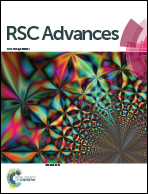Influence of lamellar structure on the stress–strain behavior of β nucleated polypropylene under tensile loading at elevated temperatures
Abstract
In this article, five β nucleated polypropylene (β-iPP) cast films were prepared through crystallizing from 110 °C to 135 °C. The differential scanning calorimetry (DSC), wide-angle X-ray diffraction (WAXD) and scanning electron microscopy (SEM) results show that all the five β-iPP samples had similar crystallinity, a high content of β-crystals but different β-lamellae distribution. Then the stress–strain behaviors of β-iPP at elevated temperatures were investigated in detail. We found that the slight difference in the β-lamellae distribution in β-iPP would affect the stress–strain behavior of β-iPP significantly. Based on the characterization of the morphological evolutions during stretching by 2D-WAXD and SEM, it is concluded that the β-iPP sample whose β-lamellae content along the flow direction was higher than that of the transverse direction would form a coarse fibrillar structure after longitudinal stretching and thus result in a low strain-hardening modulus. However, the β-iPP precursor film crystallizing at 126 °C, whose β-lamellae distribution with different angles to the tensile axis is most uniform, produced highly oriented fibrils and a homogeneous distribution of cavities, leading to the highest strain-hardening modulus and the narrowest pore size distribution after biaxial stretching.


 Please wait while we load your content...
Please wait while we load your content...